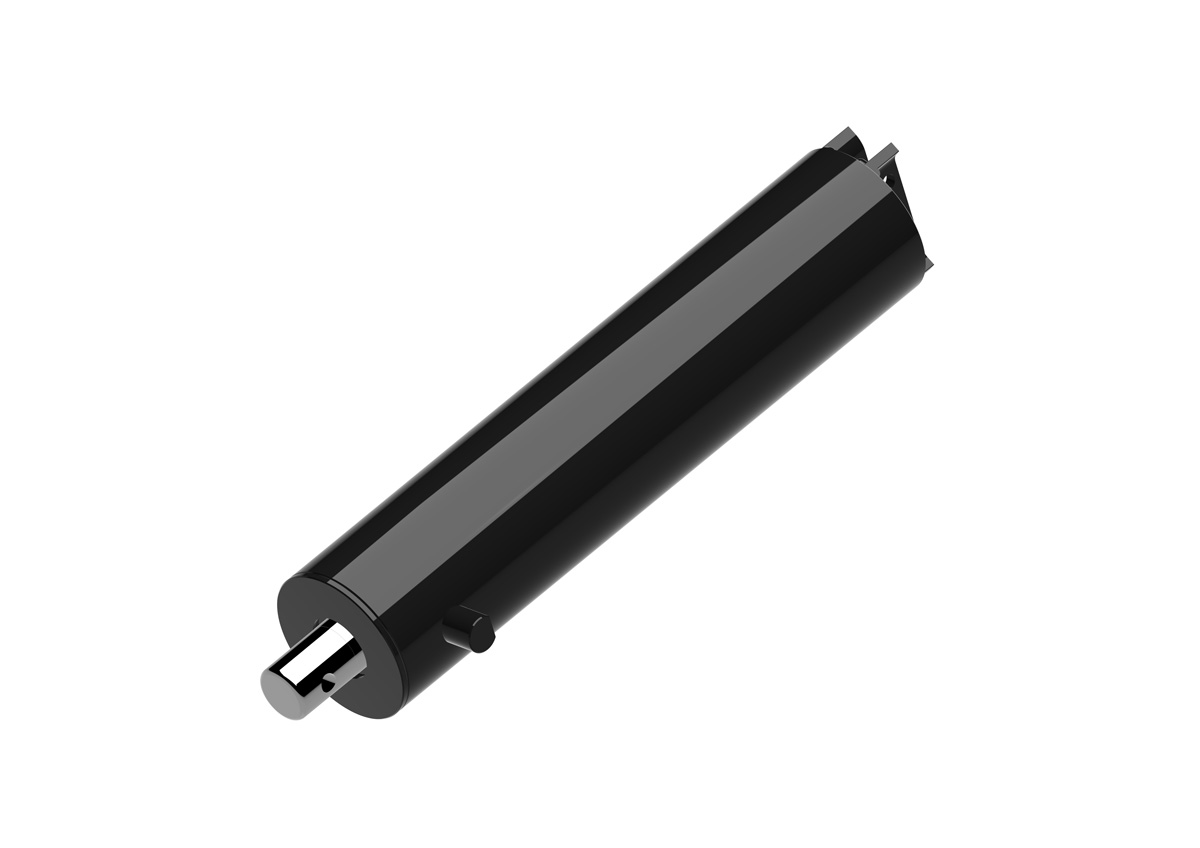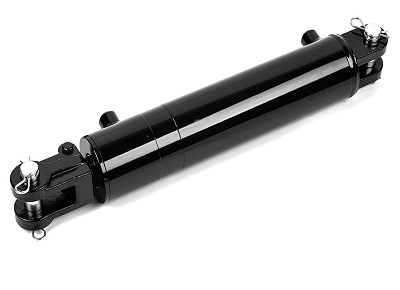Hydraulic cylinders are critical parts of the truck crane, which play the role of lifting and moving the loads with precision and control. As one of the leading hydraulic cylinders suppliers, HUTCHIN produces robust, durable hydraulic cylinders for truce crane manufacturers.
A crane cylinder is a specialized hydraulic cylinder used in cranes to facilitate the lifting, lowering, and positioning of heavy loads. These cylinders provide the necessary force to extend and retract the crane’s boom, allowing it to reach various heights and angles. They are designed to handle substantial loads and operate under demanding conditions, ensuring smooth and controlled movements. The precision is crucial for maintaining stability and safety during lifting operations. And crane cylinders are built for durability and reliability, capable of withstanding the rigors of continuous use in construction, shipping, and industrial applications.

The telescopic cylinder consists of multiple nested tubes that extend and retract to provide variable length. This type of cylinder is often used in telescopic cranes, where the boom needs to extend to great lengths. The cylinder telescopic hydraulic offers a compact design with extended reach capabilities.
| Inverted Telescopic Hydraulic Cylinder | Custom Telescopic Hydraulic Cylinders |
 | .webp) |
The boom cylinder is responsible for extending and retracting the crane’s boom. This type of cylinder provides the necessary force to adjust the length of the boom, allowing the crane to reach different heights and distances. Boom cylinders are crucial for positioning the crane’s load accurately.
The hoist hydraulic cylinder is used to lift and lower the crane’s load. It provides the vertical lifting force needed to raise heavy objects from the ground and position them at the desired height. Hoist cylinders are essential for the primary lifting function of the crane.
As one of the leading hydraulic cylinder manufacturers, HUTCHIN can also produce custom crane hydraulic cylinders according to your specific requirements. With over 20 years of design and production experience, we can provide custom cylinder solutions for many applications.
In the world of heavy lifting and construction, efficiency and power are paramount. Truck cranes, a vital component of this industry, rely heavily on their hydraulic systems to perform tasks that require immense strength and precision. At the heart of these systems lies the crane hydraulic cylinder, a device that has revolutionized the way we lift, shift, and move heavy loads. This article delves into the significance of hydraulic cylinder crane, exploring their design, benefits, and maintenance practices that ensure optimal performance.
Crane hydraulic cylinders are marvels of engineering, designed to convert hydraulic fluid power into a powerful linear motion. This conversion allows for the lifting of heavy materials that would otherwise be impossible to move. The design of these crane cylinders focuses on durability and efficiency, incorporating high-strength materials and seals to withstand the pressures and loads encountered during crane operations.
One of the key features of this crane cylinder is their ability to provide a high power-to-weight ratio. Unlike mechanical or pneumatic systems, hydraulic cylinders for crane can generate tremendous force in a compact form factor. This is crucial for truck cranes, where space is at a premium, and every kilogram counts. The design also includes safety mechanisms, such as pressure relief valves, to prevent overloading and potential failure, ensuring that operations proceed smoothly and without incident.
The integration of crane hydraulic cylinder brings several advantages that are hard to overlook. Firstly, the precision control offered by hydraulic systems is unmatched. Operators can execute movements with high levels of accuracy, essential for placing loads in exact positions or performing delicate tasks in congested areas. This precision, combined with the power of hydraulic cylinders, enhances the crane’s versatility, making it suitable for a wide range of applications, from construction sites to logistics operations.
Another significant benefit is the reduced maintenance and operational costs. Hydraulic cylinders for crane have fewer moving parts compared to mechanical systems, which translates to lower wear and tear and extended service life. Additionally, the simplicity of hydraulic systems makes them easier to troubleshoot and repair, minimizing downtime and keeping projects on schedule.
To ensure that crane hydraulic cylinder continue to perform at their peak, regular maintenance is essential. This includes routine inspections for leaks, damage to seals, and wear on moving parts. Keeping the hydraulic fluid clean and at the correct level is also crucial, as contamination can lead to system failures and costly repairs. Furthermore, following the manufacturer’s guidelines for service intervals and using only high-quality replacement parts can extend the life of the customized hydraulic cylinder for crane and prevent performance issues.
Operators should also be trained in the proper use of truck cranes, understanding the limits of the hydraulic system to avoid overloading and potential damage. By fostering a culture of maintenance and responsible operation, businesses can maximize the lifespan and efficiency of their crane hydraulic cylinder, ensuring that their truck cranes remain a reliable asset for years to come.
Crane hydraulic cylinders are the unsung heroes of truck cranes, providing the power and precision required to tackle the most challenging lifting tasks. Their design, benefits, and the importance of maintenance underscore their role in the efficiency and success of construction and logistics operations. As technology advances, the capabilities of these hydraulic systems will continue to expand, pushing the boundaries of what is possible in the world of heavy lifting.

